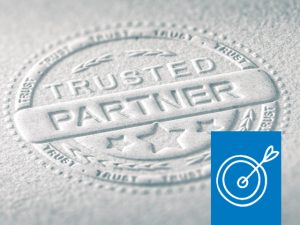People can take time to come to a decision but some never seem to cross the line, despite seeking professional advice.
Should you push and prod these people or just let them go and hope they will make up their mind at some stage?
In this article, the final in a series from Knowledge Master’s Jim Prigg on getting clients across the line, he writes that identifying why a client may be reluctant to commit will often reveal the solution to them taking up the advice.
Once again, Jim says advisers should not be shy about arguing the case for what they can do for clients and then doing that for them.
It may seem counter intuitive, particularly if you have spent time showing people how financial advice can help, but people won’t always make decisions about the insurance offer you make. This slows down your cash-flow, blunts your enthusiasm and can put you in “push” mode rather than leading prospects to make decisions.
People don’t or won’t make decisions for a variety of reasons such as:
- They don’t want to offend you by saying NO to your face
- There are factors affecting their decision they have not disclosed to you
- They don’t see the value in what you are advising
- They are afraid to say YES (true)
- They won’t make the necessary sacrifice to include your advice in their budget
- They don’t properly understand the benefits of your advice
- They are lazy
- They don’t make the final decision
These factors cause procrastination. It is not that clients don’t want to act. It just that the compelling reason to act now is over-ridden by their negative action state of mind.
So when you are faced with slow decision makers dragging the chain and wasting time at least try to deduce why they are not ready to act from the list above. If you can discover the reason for procrastination it will help you to be able to reach a decision quicker.
Instead of becoming pestering Pete or Peta by constantly trying to get a resolution, there are some simple and effective ways to speed up the decision making process by procrastinators.
1. Start with the end in mind. Be pre-emptive.
If you are in the job of delivering solutions then articulate that early in the interview. Identify the problem first with forensic fact finding. Having discovered how to apply the solution, put it in perspective by asking a simple question that involves the problem and the solution for the prospect. Try something like this:
“If I could show you a way to solve (insert the problem) that was within your budget and you felt comfortable with it, is there any reason why you wouldn’t want to implement it?”
You can often do this in the first interview. There is no secret here. If you produce the goods then the prospect is in no doubt about what needs to happen up front.
2. Give different choices of actions throughout your presentation to get to the required decision making situation.
Prospects can react in different ways to your offers. Determine whether they actually want help and the time frame they are prepared to act in. Learn how to ask different questions that will get you to the same destination, but using various levers.
For example:
“The time frame to put this on track is about 4 weeks. Is that OK with you?”
“If we can get all the data and paper work together in the next 4 weeks is that a sensible time frame?”
“Just imagine, in 4 weeks we will have your plan up and running. Does that make you feel GOOD?”
Different questions, but they lead to the same outcome.
3. Continually trial close
Learn how to test the temperature of the discussion by using inclusive statements and questions through your presentation. Comments like:
- How do you feel about this so far?
- Is this within the budget?
- What do you like most about this solution?
- This will make your (accountant, spouse, partners) feel comfortable, won’t it?
- Are we on the same page here?
- Simple solution, when you think about it, isn’t it?
- I like this at this stage, but how do you think we can improve it?
4. Learn to disqualify bad, reticent and reluctant prospects early.
Value your time. You don’t have to deal with slow paced decision makers where they set the agenda and time frames. Put the decision back to them. If you feel certain prospects are not going to make quick decisions learn to gently disqualify them (but still leave the door open) by including phrases like:
“Why don’t you go and get a second opinion? Then come back and see me last. We can lay all the options on the table and I will gladly tell you which one is the best for you. That’s fair isn’t it?”
“As we have been talking I can see there is something you are not sure about. Is that correct? Look, why don’t we take some time out. I will contact you by (insert a near time frame). However, if you make your mind up earlier you will call me to tell me your decision, won’t you?”
“Often people come to see me with an outcome in mind that takes time, education and sacrifice to deliver. At the present time I believe that you need some more information to help find the outcome you are looking for. Why don’t we recalibrate? I will get you the valuable information and then we will talk again in a fortnight. Is that OK with you?”
Let them think they are now in control of the interview situation, but options like this give you the ascendancy if they do come back. You are now setting the terms of reference to do business with you. Sometimes a simple breather or cooling off is all that is required.
5. Make sure you are speaking with the decision maker
Reticence to act in some cases can be because the prospect is not empowered to act. Third parties may have put a caveat on moving ahead by saying things like:
- Don’t do anything until you get back to me
- Get it in writing
- Don’t take risks
- Get back to me first and then we will see if we can get a better price
These people who have hijacked the decision making process can be senior family members, the spouse, business partners, accountants, boards or even other advisers. To be certain, it is best to frame your questions to:
a) Discover who the hidden playmaker is
b) If there is a time frame involved
c) If there is a pecuniary interest by the person holding up the decision making process
To help you get around this third-party intrusion ask questions like:
“Just to clarify the situation, can you detail for me the two major things you have to get information on for your (insert third party name or position)? If I can deliver the information they are looking to access and they agree with it, what happens then?”
This is looking ahead of the road block to chart a course of action that needs to be taken to gain a resolution.
6. Have a range of ways to get the prospect to say YES
This can be as simple as a checklist of questions (mental or hard copy) that you use as a process of elimination to discover the procrastination cause.
- Let’s see if I can help you, if that’s OK with you?
- The plan is within your budget?
- You do feel OK with this?
- We haven’t missed anything in arriving at the solution, have we?
- Is there anyone else you want to share this knowledge with?
- You do trust me enough to tell me the reason for wanting to wait, don’t you?
Offer choices of actions to continue.
- When is the most convenient time for me to pick up your other papers?
- Would you prefer to pay by credit card or cheque?
- Do you want it in joint names or cross owned?
- Can I get this done before(set time, eg: end of financial year, Christmas) for you?
Actions and Activities
- Create a flow chart of new advice offerings in progress. Monitor the speed of completion of each new client. Ascertain which clients need to be hastened. Select the method(s) you will use to fast track each them and then implement those methods.
- Establish a list of things you can share with prospective clients on how to fast track implementing your advice for them.
- Role play how you would introduce these fast track ideas to clients with an associate or manager.

This article is reprinted with permission from Jim Prigg CEO and founder of Knowledgemaster Pty Ltd. Knowledgemaster is an online resources company that delivers practical communications, interaction, sales and soft skills tips, tactics, techniques. Learn more about winning business programs and courses by contacting Jim.
Contact Jim Prigg to learn more about winning business programs and courses.
Contact or follow the author: Website | Email | Telephone: 03 5232 1500, 0408 520 453













